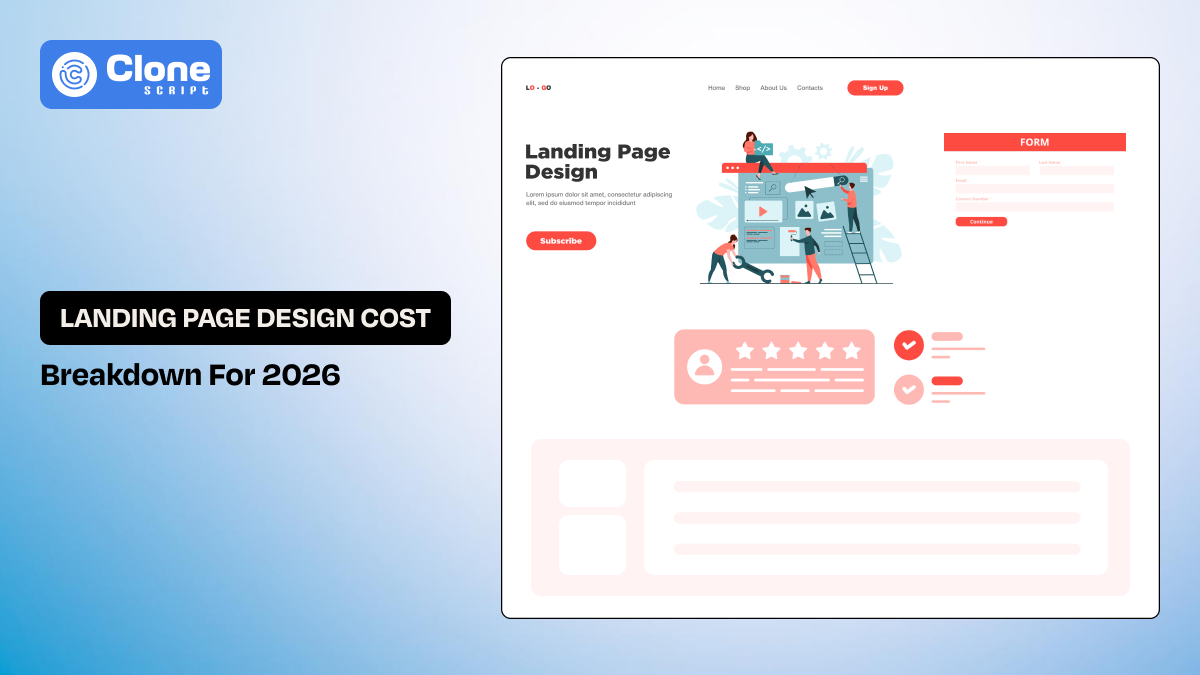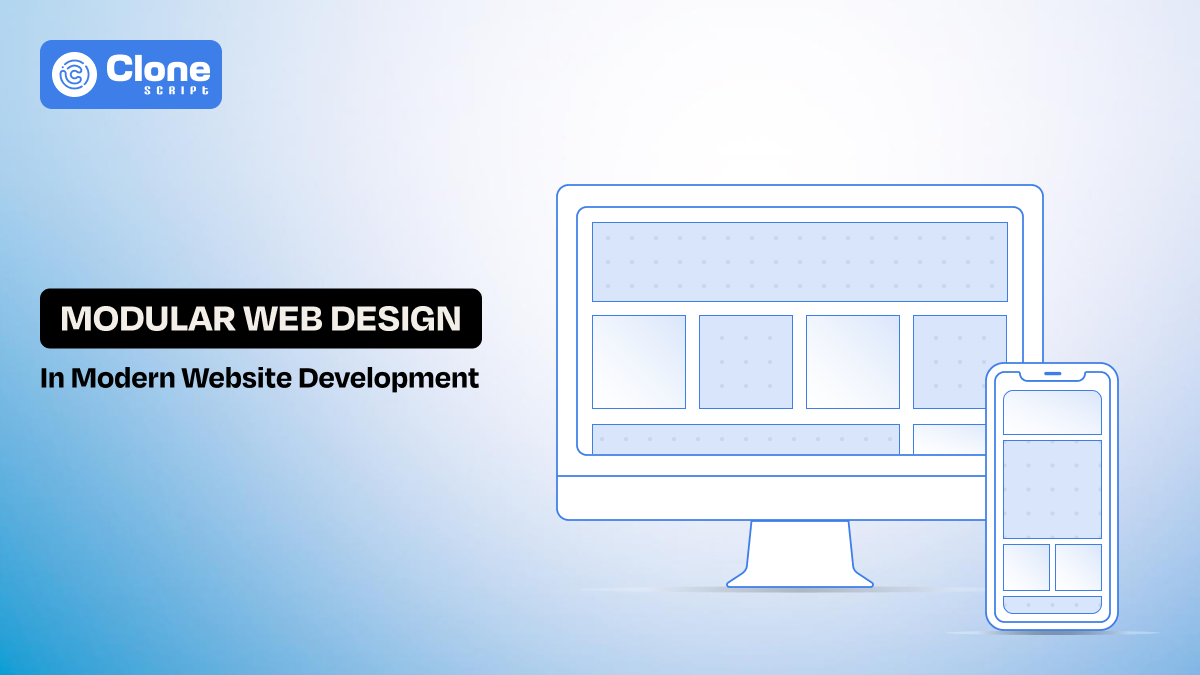Top 10 Types of Web Development Services: Everything You Need to Know
Your website is the real identity of your business values and brand tone. A well-designed, functional, and secure website can attract customers, build trust, and drive sales. But with so many different types of web development services available, it can be overwhelming to know where to start.
In this guide, we'll explore the top 10 essential web development services every business should consider. From website design to mobile apps and e-commerce solutions, we’ll break down each service and highlight how they can help your business succeed online.
What are Web Development Services?
Web development services are all about building and maintaining websites or web apps that work smoothly and look great. They cover everything from the design you see on a site (front-end) to the technical side that keeps it running (back-end).
These services also include setting up e-commerce stores, optimizing sites for mobile, managing content, and providing regular updates. By using these services, businesses can create professional, user-friendly websites that help them stand out online, attract customers, and grow in today’s competitive digital world.
10 Web Development Services Types
Consider these top 10 web development services to elevate your online business presence. , These services are essential for great success from web design and e-commerce to mobile apps and CMS.
1. Building the Foundation: Website Design and Development
Website design and development are the foundation of any online presence. Using pre-built website templates can speed up the process and make professional design more accessible to businesses of all sizes. These templates come with UI/UX-focused designs that prioritize user experience (UX) and user interface (UI), ensuring that your visitors have an intuitive and seamless interaction with your website.
For small businesses, this approach can save time and money while delivering a high-quality product. If you like to set up an online store, then e-commerce website templates can be a game changer for store development. Most of the premium templates are also customizable, allowing your business to tailor the look and feel of the site to your specific brand identity.
2. Selling Online: E-commerce Development
If you’re selling products or services online, an e-commerce website development service is essential. E-commerce websites come with unique requirements that go beyond standard web development. It comes with secure payment gateway integration, inventory management, and a seamless shopping cart experience to ensure that customers complete their purchases.
There are several popular e-commerce platforms, including Shopify, WooCommerce, and Magento, that offer ready-made solutions for businesses looking to get started quickly. For businesses with more complex needs, custom e-commerce development is also an option, providing tailored features that match your specific business model.
Let’s move forward to another service of web development.
3. Reaching Mobile Users: Mobile App Development
Offering products and services online through the mobile app is the simple formula to be a successful business. Most importantly, when you have an e-commerce business. You may know e-commerce giants Amazon and Flipkart apps are ruling the entire customer market. So, e-commerce app development will be in your favor.
To provide a better customer experience or streamline internal processes, mobile applications can significantly enhance engagement and operational efficiency. For your startup business, it’s tough to collect the funds for mobile app development but its advantages are limitless.
There are certain kind of approaches to mobile app development, including:
-
Native apps: Usually designed for a specific operating system like iOS or Android.
-
Hybrid apps: Combine elements of native apps with web apps.
-
Cross-platform apps: Allow the same app to run on multiple operating systems.
Each option has its own set of pros and cons, but they all contribute to the increasing need for mobile solutions in business.
4. Managing Your Content: Content Management Systems
Another type of web development service is known as “Content Management Systems (CMS) Development.” CMS platforms make it easy for businesses to update and manage their website content without needing technical expertise. With a CMS, you can add blog posts, update pages, or even manage e-commerce products without writing a single line of code.
That sounds amazing.
There are popular CMS platforms include:
-
WordPress: Ideal for blogs, business websites, and e-commerce stores.
-
Drupal: Great for complex, high-traffic websites such as EdTech and MNCs.
-
Joomla: Suitable for businesses that need more advanced functionality than WordPress offers.
The correct CMS platform development solely depends on your business needs, objectives, and budget. As each platform comes with its pros and cons consider which one can be beneficial for your business and then make a decision. Don’t forget to prefer the scalable CMS platform to accommodate the business growth.
5. Tailoring Solutions: Custom Software Development
Custom software development involves creating unique software solutions tailored to the specific needs of your business. Whether you’re looking to automate internal processes, manage customer relationships, or handle specialized workflows, custom software applications can streamline operations and increase productivity.
The development process typically includes a thorough analysis of your business needs, followed by design, coding, testing, and implementation. For example, to manage your tattoo studio, a tattoo appointment scheduling software with a backend can manage the bookings efficiently. While it requires more investment upfront, the long-term benefits can be substantial.
After the custom software solution, it’s time to introduce another kind of web development.
6. Interactive Experiences: Web Application Development
Web applications are interactive software solutions that run in a web browser on any device having an active internet connection. These applications can range from project management tools to customer relationship management (CRM) systems, allowing businesses to handle tasks, automate workflows, and interact with customers efficiently.
Examples of popular web applications include:
-
Slack for team communication.
-
Salesforce for managing customer relationships.
-
Asana for project management.
Web apps can be custom-built to suit the exact needs of your business, offering flexibility and functionality that standard websites may not provide.
Don’t get confused between mobile apps and web apps. Web applications do not require installation as mobile apps do and they are customizable to suit specific workflows. However, compared to the mobile app, web application development costs are low. So keep this in mind.
7. The Visual Appeal: Front-end Development
The front-end development of your website is what users interact with everything from the buttons they click to the forms they fill out. Front-end developers focus on creating this user-facing side of the website, ensuring that it’s responsive, visually appealing, and functional across all devices.
Front-end website development relies on technologies like HTML, CSS, and JavaScript to bring a design to life. A well-developed front end is crucial for delivering a seamless user experience, which can help improve user satisfaction and conversion rates.
At the same time, front-end mobile app development focuses on creating user-friendly, responsive interfaces. Using technologies like HTML, CSS, JavaScript, and frameworks like React or Angular, enhances user experience and boosts website performance.
8. The Technical Backbone: Back-end Development
While front-end development focuses on what users see, back-end development powers the behind-the-scenes functionality of your website. The back-end manages databases, servers, and application logic, ensuring that everything works smoothly and efficiently.
Popular back-end programming languages include:
-
PHP: Widely used for web development.
-
Python: Known for its simplicity and versatility.
-
Ruby on Rails: A certain kind of full-stack framework for creating advanced web applications.
A well-structured back-end ensures that your website can handle high traffic, manage data securely, and perform reliably.
9. Storing Your Data: Database Development
At the heart of most websites and applications is a database, where all the critical data is stored and managed. Proper database development ensures that your business can store and retrieve data quickly, securely, and efficiently.
Popular database management systems (DBMS) include:
-
MySQL: An open-source DBMS commonly used for web applications.
-
PostgreSQL: Known for its advanced features and scalability.
-
MongoDB: A NoSQL database suitable option for handling large volumes of unstructured data.
Choosing the right database is essential for maintaining the speed and security of your website or application.
10. Ongoing Success: Maintenance and Support
Once your website or app is up and running, it requires ongoing maintenance and support to ensure that it continues to function smoothly with updating software. QA & Testing services include fixing bugs, improving security, and optimizing performance.
Partnering with a reliable web development company such as All Clone Script for maintenance services ensures that your site stays secure, performs well, and adapts to new business needs as they arise.
Best Practices for Web Development Services
Here are the best practices for web development services:
-
Clean and Efficient Code: Write streamlined, organized code to improve site performance and ease future updates.
-
Mobile-First Design: Prioritize mobile responsiveness, as most users access websites from smartphones.
-
SEO-Friendly Development: Use proper meta tags, alt texts, and responsive design to boost SEO efforts and search engine rankings.
-
Regular Security Updates: Protect user data and prevent vulnerabilities by updating software regularly.
-
Ongoing Maintenance: Ensure your website stays fast, secure, and up-to-date with regular support and optimization.
Ready-made Web Development Solution to Your Business Suits
Conclusion
Choosing the right web development services is critical to your business’s online success. From website design and development to e-commerce solutions, mobile apps, and custom software, each service plays a crucial role in building and maintaining a robust online presence.
Whether you’re starting a new business or looking to modify your current website, these 10 types of web development services can help ensure your site functions smoothly, looks great, and meets the specific needs of your business.
Ready to take your business to new heights and align your expectations?
Contact us today to discuss how our approach can help you achieve your web development goals!
 BTC - Bitcoin
BTC - Bitcoin
 USDTERC20 - USDT ERC20
USDTERC20 - USDT ERC20
 ETH - Ethereum
ETH - Ethereum
 BNB - Binance
BNB - Binance
 BCH - Bitcoin Cash
BCH - Bitcoin Cash
 DOGE - Dogecoin
DOGE - Dogecoin
 TRX - TRON
TRX - TRON
 USDTTRC20 - USD TRC20
USDTTRC20 - USD TRC20
 LTC - LiteCoin
LTC - LiteCoin







